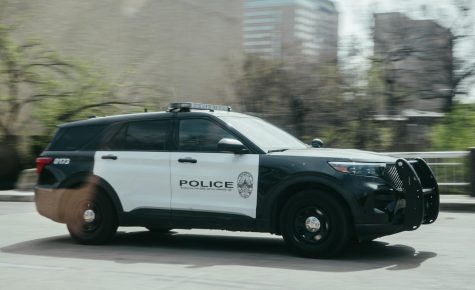APD, DPS resume partnership with revised strategies following community criticism
July 3, 2023
In light of community backlash, a revised partnership between the Austin Police Department and the Texas Department of Public Safety resumed this month after a pause in May.
The partnership was initially introduced in March due to a staffing shortage in the Austin Police Department but was put on pause after Gov. Greg Abbott diverted DPS state troopers to the Texas-Mexico border. However, the partnership drew criticism after a report from the Travis County Attorney’s Office found that of the people arrested by DPS officers, 65% were Latino and 23% were Black.
“What we saw, especially on the East Side and in a lot of communities of color, were that they felt targeted,” said Zohaib “Zo” Qadri, city council member for District 9. “From what I’ve heard from other council districts and from constituents from those respective districts is that they almost felt like they were living in a surveillance state.”
The partnership was a product of Austin Mayor Kirk Watson, Gov. Abbott and Lt. Gov. Dan Patrick working together to address Austin policing shortages. According to the City of Austin website, the core goals of the partnership are to “reduce APD response time to Austinites placing 911 emergency calls for service, to reduce incidents of violent crime, and to reduce the number of fatal and injury crashes on our roadways.” Reports on the partnership include emergency calls and collisions.
In previous reporting by The Daily Texan, Jonathan Kringen, APD chief data officer, said that violent crime decreased by 58% in areas where DPS was deployed. As the partnership resumes, it was announced that changes would be made to how DPS state troopers would be deployed to accommodate the criticism that certain minority groups felt targeted.
According to a June 22 press release, state troopers would no longer focus on areas of high call volume, but would be directed at the APD’s discretion to three areas of need. These areas include high traffic volume, high amounts of violent crime and patrol sectors where there is a shortage of APD officers. It also stated that APD leadership would attend shift briefings each week with DPS to check-in.
“The partnership with DPS has already proven valuable to reducing crime and shortening response times,” APD police Chief Joseph Chacon said in the press release. “This new iteration will ensure we continue that while taking Council direction into account and pivoting the deployment strategy.”
The press release also stated that “DPS criminal investigators and crime analysts will also support Austin Police in violent crime investigations and efforts to reduce gun crime.”
Qadri said that he is not sure yet how this new iteration of the partnership will go, but that it is not a long-term solution. He said he hopes that the City Council negotiates a long-term contract with the policing union so they can start filling in APD vacancies following the passing of Proposition A in this past May’s election, giving City Council more police oversight.
“I think it’s about getting to the negotiating table in good faith with the police association and getting a longer-term contract,” Qadri said.





